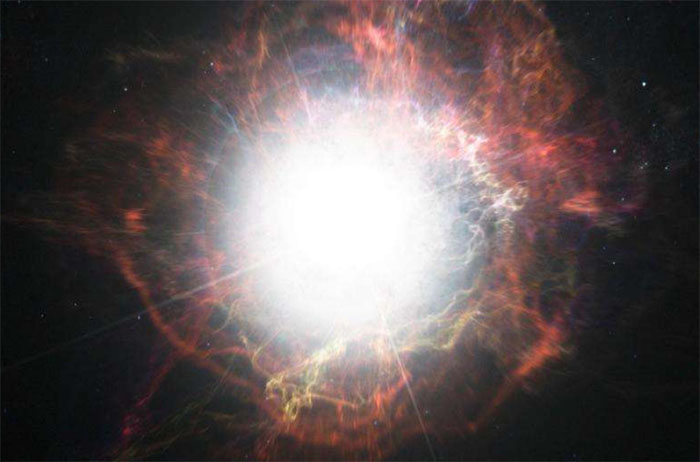【Pegasus Voice No.2】How does cosmic dust form in supernova explosions
Release Time:2021-03-17 15:32
How does cosmic dust form in supernova explosions
Pegasus Voice | No.2
Pegasus Voice | No.2
words:website | reciter:Michael Wang(Grade 11)

Hello everyone. This is Michael here from 11th grade of Pegasus California School. In today’s Pegasus Voice, I am going to talk about the topic that how does cosmic dust form in supernova explosions. Enjoy in science, let’s get start.

There are billions of stars and planets in the universe. A star is glowing sphere of gas, while planets like Earth are made up of solids.
The planets are formed in dust clouds that swirled around a newly formed star. Dust grains are composed of elements like carbon, silicon, oxygen, iron, and magnesium. But where does the cosmic dust come from?
New research from the Niels Bohr Institute at the University of Copenhagen and Aarhus University shows that not only can grains of dust form in gigantic supernova explosions, they can also survive the subsequent shockwaves they are exposed to.
The results are published in the scientific journal, Nature. How the cosmic dust is formed has long been a mystery to astronomers.
The elements themselves are formed out of the glowing hydrogen gas in stars. The hydrogen atoms fuse together into heavier and heavier elements and in the fusion process the star emits radiation in the form of light, that is, energy.
When all the hydrogen is exhausted and no more energy can be extracted, the star dies and giant clouds of gas are slung out into space, where they are recycled into new stars in a vast cosmic cycle.
The heavy elements are primarily formed in supernovae, which are massive stars that die in a gigantic explosion. But how do the elements grow into 'larger clumps' like cosmic dust grains?
"The problem has been that even though dust grains composed of heavy elements would form in supernovae, the supernova explosion is so violent that the grains of dust may not survive. But cosmic grains of significant size do exist, so the mystery has been how they are formed and have survived the subsequent shockwaves. Our research casts new light on this -- both on how dust is formed and how it survives the shockwaves,"
explains Professor Hjorth, head of the Dark Cosmology Centre at the Niels Bohr Institute at the University of Copenhagen.
The researchers observe supernovae using the astronomical instrument X-shooter on the European Southern Observatory's Very Large Telescope in Chile. Part of the X-shooter was developed and built by Danish researchers at the Niels Bohr Institute and what is special about the instrument is both that it is extremely sensitive and the three observe all light at once -- from ultraviolet to visible light to infrared light. This is extremely important when observing phenomena in the distant universe.
Jens Hjorth explains that first they had to wait for the right, luminous supernova to explode. They were lucky and when it happened they initiated an observing campaign. This was a very bright supernova, 10 times brighter than the average supernova. The exploding star itself had been very massive, more than 40 times the mass of the Sun.
Researchers from the Dark Cosmology Centre at the Niels Bohr Institute, Aarhus University, and NASA, among others, followed the explosion right from the start and the following 2½ years and analysed the light from the very bright new star.
